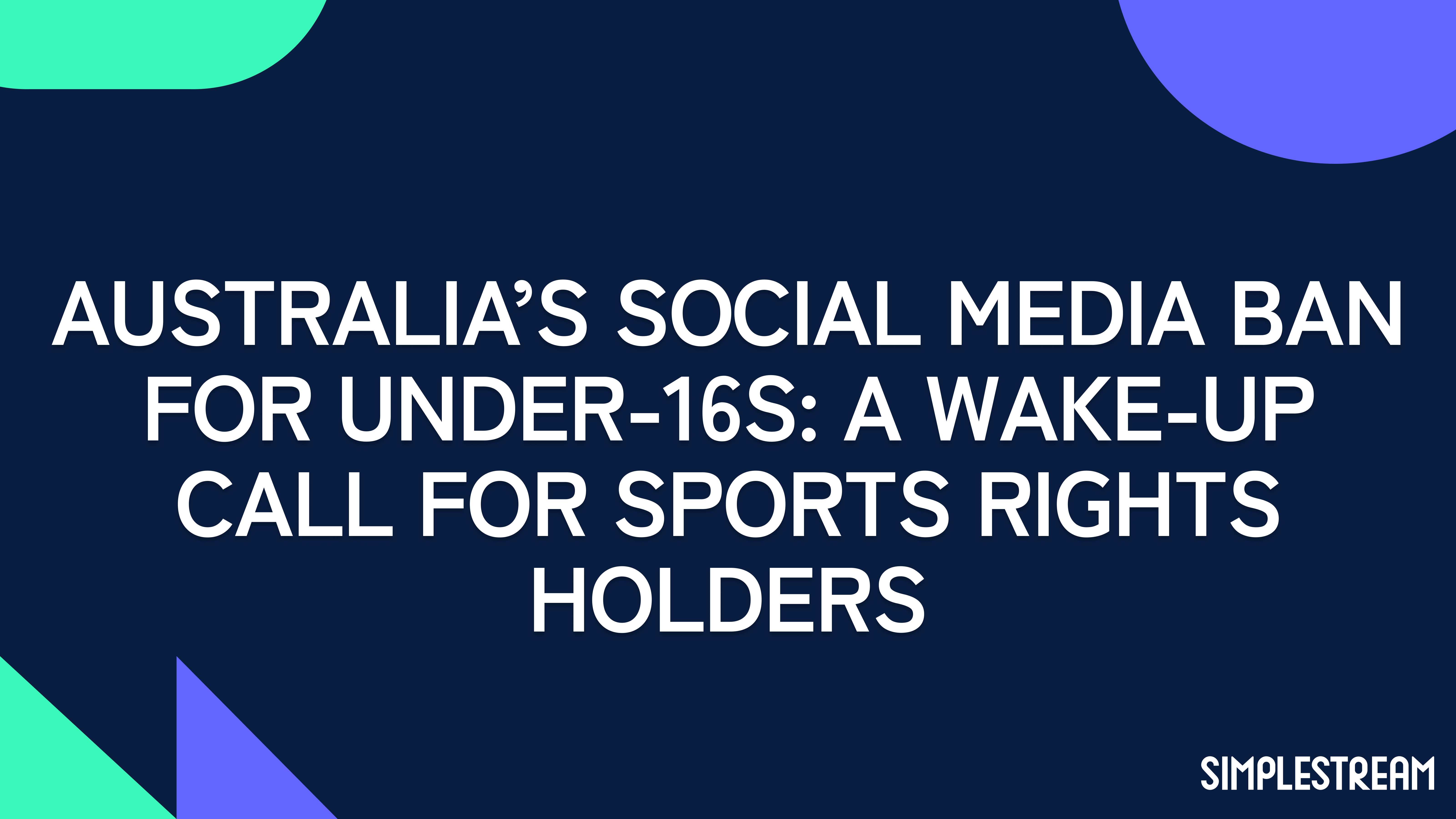Sports and entertainment outlooks, with Dan Finch
Engage more, engage better: the sports and entertainment industries are facing growing challenges to connect with hungry and demanding fan-bases.
Audience engagement, revenue generation, viral content: the paradigm of business success – in times dominated by the threat of recession – seems to be built upon these three key pillars. The streaming space keeps growing consistently, with a wider array of options provided to audiences to consume content, especially in the sports and entertainment spaces. Two worlds that, today, are effectively blended, also amid the shifting landscapes brands and content creators are forced to face in a world dominated by social media. One where user-generated content (UGC) and social-ready, bite-sized video are the most popular means of communications for younger demographics.
Sports- and entertainment-focused brands are looking to connect with and engage their audiences with deeper experiences. Especially when the end-users are part of the so-called Gen Z cohort. How can sports and entertainment organisations re-invent themselves and quickly adapt to rapidly changing consumption habits? We sat down with Simplestream’s Chief Commercial Officer, Dan Finch, and discussed the new consumption models, trends, and forecasts for the future, with an eye on the findings of Deloitte’s latest Sports Outlook and Media and Entertainment Outlook. Read on.
Are we still living in the age of a ‘streaming revolution’?
“The streaming video revolution is a rather old concept, today. The radical changes to content consumption habits that originated nearly 15 years ago are now part of our everyday life. However, the revolution continues, and keeps adding layers of complexity to a market that has witnessed several changes of heart, especially in recent years. On one side you have subscription fatigue amid stressful competition, and the SVOD model becoming less stable and sustainable in isolation, as users are looking to review their spending on paid-for platforms. On the other hand, players in the market are diversifying their revenue streams by accessing ad-supported solutions – FAST, or pure AVOD patterns. Operational costs remain high, and new pathways to enhance profitability are needed. Looking at the near future, operators will need to focus on new formats to distribute their content, and potentially explore different spaces once considered niches and today, by all means, part of the societal fabric. It’s easy to think of gaming, but there are plenty of sectors that will benefit from a more thorough approach to video, when combined with shopping-ready interfaces or similar. All in all, the revolution is still very well underway. It just continuously mutates and drifts towards new trends, responding the challenges that technological advancement adds to the plate.”
How can brands better engage with their Gen-Z audiences?
“Undeniably, Generation Z is the force behind a thorough re-definition of what the entertainment landscape looks like today and will look like in the next five to 10 years. Deloitte’s Media and Entertainment Outlook fairly points out how younger demographics are rapidly maturing into the ‘consumers of tomorrow’. Those who are walking into adulthood and gaining substantial purchasing power. Winning their preference is challenging, and it can only happen with more immersive, digitally focused experiences. Rights owners and rights holders need to focus on strategies that are multi-platform, and able to facilitate the integration of short-form content. If in the past, especially in sport, big players were telcos and pay-TV providers only, today anyone can establish a direct relationship with their fan-bases, and own it. The adoption of media that are social, interactive, trend-driven and likely to become viral is key to driving new initiatives. Think about the fact that Gen Z make up to 20% of the US population today, and you’ll have a clear indicator of how crucial it is for brands to tackle this cohort with the right strategy and tools.”

What does the future of video content look like?
“It’s difficult to predict, really. Even if we had a crystal ball to investigate the next decade or so, it would prove challenging to build a coherent picture, as technology advances quickly and trends are prone to rapid diversions. We started to see some breaking points in the gaming industry, a sector that’s particularly dear to younger demographics. Gamers and streamers are a vast population of content creators who are outgrowing their original ecosystem, the social space. The move to a direct-to-consumer dimension is already happening, even though this is not perceptible, yet. With revenue generation in mind, creators are looking to go independent, less and less tied to traditional income generated by ads on social platforms. They’re more interested in subscription models to access the content streamed live, almost on a 24/7 basis. It would be short-sighted for content owners and platform operators to ignore this wind of change. From entertainment to sport, the new age of content has the word ‘experience’ at its heart. Sports entities must have video at the centre of their content mix, engaging users on their own platforms of choice, bringing fresher information that blends physical and digital experiences.”
Blockchain, NFTs, metaverse: are these the new avenues for enhanced monetisation?
“New technologies have been surfacing in the past few years, bringing a whole new dimension to the world of both sports and entertainment. Digital assets such as non-fungible tokens (NFTs) and blockchain have encouraged sports brands across the globe to partner with dedicated tech suppliers to leverage these new market trends. Has it worked yet? There are still many question marks floating around, in my opinion. I don’t think sports organisations should base their strategy on specific benefits. Instead, they should look to a broader utility for their fans. Hence, the path to commercial growth for this niche might be a little longer than we expected. However, these new technologies can equip brands with offerings that are aimed to increase fan loyalty, through diversified access to the core product. And this goes beyond the mere sports sphere, embracing the entertainment space.
“Finally, the metaverse. It was pitched as the ‘next huge thing’, yet the latest research has shown how that hype has cooled. It might be down to content that’s not enough compelling, yet, but I believe this is still a young concept with great potential going forward. Brands want to see consumers in the metaverse before they invest in a whole new world. However, how do you attract eyeballs to an empty virtual land? It’s a bit of a paradox, like ‘chicken and egg’, and the next couple of years, with the increasing importance of AI-generated content, might tell us more about it.”


